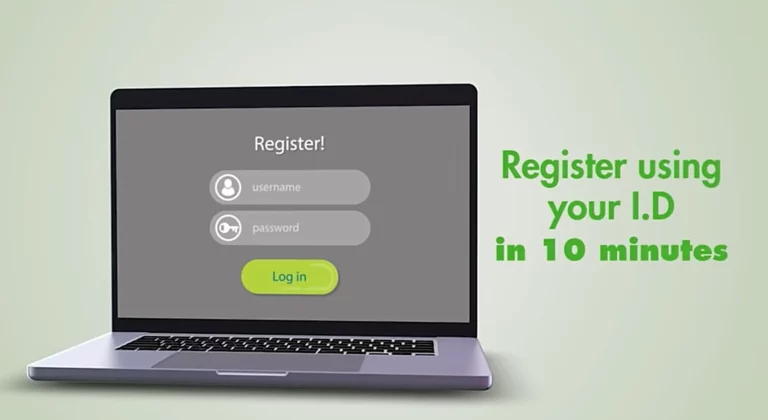What are Lending Businesses?
Lending businesses are financial institutions that provide loans or credit to individuals, businesses, and organizations. They play a crucial role in the economy by facilitating access to capital, enabling borrowers to finance various needs, such as purchasing homes, starting businesses, or funding personal expenses.
The Importance of Lending
Lending is essential for economic growth and development. It allows individuals to make significant purchases, businesses to expand and invest in growth opportunities, and governments to fund public projects. Without lending, many economic activities would be severely constrained.
Types of Lending Businesses
There are several types of lending businesses, each focusing on different areas and serving different clientele. Some examples include:
- Banks: Traditional financial institutions that offer a wide range of lending products, including mortgages, personal loans, and business loans.
- Credit Unions: Member-owned cooperatives that provide lending services to their members, often at competitive rates.
- Mortgage Companies: Specialized lenders that focus exclusively on providing mortgage loans for home purchases or refinancing.
- Finance Companies: Non-bank lenders that offer various types of consumer and business loans.
Regulation and Risk Management
Lending businesses operate under strict regulations to ensure the safety and soundness of the financial system. These regulations cover areas such as capital requirements, lending practices, and consumer protection. Effective risk management is also crucial for lending businesses to maintain financial stability and minimize the risk of loan defaults.
Types of Lending Institutions
The lending industry is diverse, with various institutions offering different types of loans and services. Here are some of the main types of lending institutions:
- Commercial Banks
Commercial banks are the most common and widely recognized type of lending institution. These are traditional brick-and-mortar banks that offer a wide range of lending products, including:
- Mortgages
- Personal loans
- Auto loans
- Credit cards
- Business loans
Commercial banks are typically regulated by government authorities and are required to maintain certain capital reserves to ensure financial stability.
- Credit Unions
Credit unions are member-owned, not-for-profit financial cooperatives. Unlike commercial banks, credit unions are typically focused on serving a specific group or community, such as employees of a particular company or members of a certain organization.
Credit unions offer many of the same lending products as commercial banks, including mortgages, personal loans, and credit cards. However, they often have more favorable interest rates and fees for their members.
- Mortgage Lenders
Mortgage lenders are specialized financial institutions that primarily focus on providing loans for residential and commercial real estate purchases or refinancing. Examples include:
- Mortgage banks
- Mortgage brokers
- Direct lenders
These lenders may work with a variety of funding sources, including banks, credit unions, and private investors.
- Finance Companies
Finance companies are non-bank lenders that specialize in various types of consumer and business lending. They may offer:
- Personal loans
- Auto loans
- Equipment financing
- Inventory financing
- Accounts receivable financing
Finance companies often cater to borrowers with less-than-perfect credit or those who may not qualify for traditional bank loans.
- Peer-to-Peer (P2P) Lending Platforms
Peer-to-peer lending platforms are online marketplaces that connect borrowers directly with individual investors or lenders. These platforms use technology to streamline the lending process and often have more flexible lending criteria than traditional institutions.
P2P lending can be an alternative for borrowers who may not qualify for loans from banks or other traditional lenders.
- Alternative Lenders
Alternative lenders are a diverse group of non-traditional lenders that offer a wide range of lending products and services. This category includes:
- Online lenders
- Payday lenders
- Pawn shops
- Title loan companies
Alternative lenders often cater to borrowers with poor credit or those seeking quick access to funds, but they typically charge higher interest rates and fees.
Each type of lending institution has its own strengths, target markets, and lending criteria. Understanding the different options can help borrowers find the best fit for their specific financial needs and circumstances.
Mortgage Lending: Financing the Dream of Homeownership
Mortgage lending is a vital component of the lending industry, enabling individuals and families to purchase residential properties. It is a specialized form of lending that involves significant sums of money and longer repayment periods compared to other types of loans.
What is Mortgage Lending?
A mortgage is a type of loan specifically designed to finance the purchase of a home or real estate property. The property itself serves as collateral, meaning that if the borrower fails to make the required payments, the lender can foreclose on the property to recover their investment.
Mortgage lenders are financial institutions that specialize in providing these types of loans. They can be banks, credit unions, or specialized mortgage companies.
Types of Mortgage Lenders
There are several types of mortgage lenders, each with its own characteristics and lending criteria:
- Commercial Banks: Many large commercial banks offer mortgage lending services alongside their other lending products. These institutions typically have strict lending criteria and may require a higher credit score and down payment.
- Credit Unions: Credit unions are member-owned organizations that often provide competitive mortgage rates and more flexible lending criteria for their members.
- Mortgage Banks: These are financial institutions that specialize solely in mortgage lending. They may offer a wider range of mortgage products and have more specialized expertise in this area.
- Mortgage Brokers: Brokers act as intermediaries between borrowers and lenders. They can shop around for the best mortgage rates and terms from various lenders, but they typically charge fees for their services.
- Direct Lenders: Some lenders, such as online mortgage companies, offer direct lending services without the involvement of a broker or middleman.
The Mortgage Lending Process
The mortgage lending process typically involves several steps:
- Pre-Qualification: Borrowers can get pre-qualified by providing basic financial information to the lender, who will then estimate the maximum loan amount they may qualify for.
- Loan Application: The borrower must complete a formal loan application, providing detailed information about their income, assets, employment, and credit history.
- Property Appraisal: The lender will order an appraisal to determine the fair market value of the property being purchased.
- Underwriting: The lender’s underwriting team will review the application and supporting documents to assess the borrower’s creditworthiness and the risk associated with the loan.
- Loan Approval and Closing: If approved, the borrower will receive a loan estimate and move towards closing, which involves signing various legal documents and finalizing the loan.
Mortgage Loan Types
There are several types of mortgage loans available, each with its own terms and conditions:
- Fixed-Rate Mortgages: These loans have an interest rate that remains constant throughout the loan term, providing borrowers with predictable monthly payments.
- Adjustable-Rate Mortgages (ARMs): ARMs have interest rates that can fluctuate based on market conditions, typically offering lower initial rates but with the potential for rate increases over time.
- Conventional Mortgages: These are traditional mortgages that conform to the guidelines set by government-sponsored entities like Fannie Mae and Freddie Mac.
- Government-Insured Mortgages: These are mortgages backed by government agencies like the Federal Housing Administration (FHA) or the U.S. Department of Veterans Affairs (VA), often with more relaxed credit requirements.
Mortgage lending plays a crucial role in enabling homeownership and supporting the real estate market. By understanding the various types of mortgage lenders and loan products, borrowers can make informed decisions and find the best financing options for their specific needs.
Personal/Consumer Lending: Financing Life’s Needs
Personal or consumer lending is a broad category of lending that encompasses various types of loans designed to meet the financial needs of individuals and households. These loans can be used for a wide range of purposes, including consolidating debt, financing major purchases, or covering unexpected expenses.
Types of Personal/Consumer Loans
There are several common types of personal/consumer loans:
- Personal Loans
Personal loans are unsecured loans that can be used for a variety of purposes, such as debt consolidation, home improvements, or emergency expenses. These loans typically have fixed interest rates and repayment terms, ranging from a few months to several years.
- Auto Loans
Auto loans are specifically designed to finance the purchase of a new or used vehicle. These loans are secured by the vehicle itself, which serves as collateral. Auto lenders may offer different loan terms and interest rates based on factors such as the borrower’s credit score, the vehicle’s age, and the loan amount.
- Credit Cards
Credit cards are a type of revolving credit that allows borrowers to make purchases and carry a balance from month to month. Credit card issuers offer various types of cards with different features, such as rewards programs, low introductory rates, or balance transfer options.
- Student Loans
Student loans are designed to help individuals finance the cost of higher education, including tuition, fees, and living expenses. These loans can be obtained from federal government programs, private lenders, or educational institutions themselves.
- Payday Loans
Payday loans are short-term, high-interest loans that are typically due on the borrower’s next payday. These loans are often used to cover unexpected expenses or bridge cash flow gaps but can come with very high fees and interest rates.
Lenders in the Personal/Consumer Lending Space
Personal/consumer loans can be obtained from various types of lenders, including:
- Banks and Credit Unions
Traditional financial institutions like banks and credit unions offer a wide range of personal/consumer lending products, including personal loans, auto loans, and credit cards.
- Online Lenders
In recent years, online lenders have become increasingly popular for personal/consumer loans. These lenders operate entirely online and often have streamlined application processes and more flexible lending criteria.
- Finance Companies
Finance companies are non-bank lenders that specialize in various types of consumer lending, such as personal loans, auto loans, and retail financing.
- Peer-to-Peer (P2P) Lending Platforms
P2P lending platforms connect borrowers directly with individual investors or lenders, offering an alternative to traditional lending channels for personal loans.
Factors Considered in Personal/Consumer Lending
When evaluating personal/consumer loan applications, lenders typically consider the following factors:
- Credit Score: A borrower’s credit score is a critical factor in determining loan eligibility, interest rates, and loan terms.
- Income and Employment: Lenders will assess the borrower’s income and employment status to ensure they have the ability to repay the loan.
- Debt-to-Income Ratio: This ratio compares the borrower’s monthly debt obligations to their monthly income, helping lenders evaluate their overall debt burden.
- Collateral: For secured loans like auto loans, the value of the collateral (the vehicle) is considered.
Personal/consumer lending plays a vital role in helping individuals and households manage their finances, make major purchases, and navigate various life events. By understanding the different types of loans and lenders available, borrowers can make informed decisions and find the most suitable financing options for their specific needs.
Business/Commercial Lending: Fueling Entrepreneurship and Growth
Business or commercial lending is a specialized area of lending that caters to the financing needs of businesses, from small startups to large corporations. These loans provide businesses with the capital they need to launch new ventures, expand operations, purchase equipment, or manage cash flow.
Types of Business/Commercial Loans
There are various types of business/commercial loans available, each designed to meet specific financing needs:
- Term Loans
Term loans are lump-sum loans that are repaid over a fixed period of time, typically ranging from one to five years. These loans can be used for a variety of purposes, such as purchasing equipment, financing inventory, or funding business expansions.
- Lines of Credit
A line of credit is a revolving credit facility that allows businesses to borrow funds up to a predetermined limit. This type of financing is often used to manage cash flow or finance short-term working capital needs.
- Commercial Real Estate Loans
Commercial real estate loans are specifically designed to finance the purchase or development of commercial properties, such as office buildings, retail spaces, or industrial facilities.
- Equipment Financing
Equipment financing allows businesses to acquire essential machinery, vehicles, or technology by spreading the cost over time. These loans are typically secured by the equipment itself.
- Invoice Financing/Factoring
Invoice financing, also known as factoring, involves selling outstanding invoices or accounts receivable to a lender or factoring company. This provides businesses with immediate cash flow while they wait for their customers to pay their invoices.
- Small Business Administration (SBA) Loans
The U.S. Small Business Administration (SBA) offers various loan programs designed to support small businesses. These loans are often provided through partnerships with private lenders and may have more favorable terms and relaxed lending criteria.
Lenders in the Business/Commercial Lending Space
Businesses can obtain financing from a variety of lenders, including:
- Commercial Banks
Large commercial banks are major players in the business/commercial lending space, offering a wide range of loan products and services tailored to businesses of all sizes.
- Community Banks and Credit Unions
Smaller community banks and credit unions may also provide business/commercial lending services, often with a focus on serving local businesses.
- Online Lenders
In recent years, online lenders have emerged as an alternative source of business/commercial financing, offering streamlined application processes and potentially more flexible lending criteria.
- Alternative Lenders
Alternative lenders, such as private equity firms or specialized finance companies, can provide financing options for businesses that may not qualify for traditional bank loans.
Factors Considered in Business/Commercial Lending
When evaluating business/commercial loan applications, lenders typically consider the following factors:
- Business Credit Score: Similar to personal credit scores, a business credit score is a measure of the company’s creditworthiness and payment history.
- Financial Statements and Projections: Lenders will review the business’s financial statements, including income statements, balance sheets, and cash flow statements, to assess its financial health and profitability.
- Business Plan and Industry Analysis: A well-crafted business plan and an understanding of the industry’s dynamics can demonstrate the viability of the business venture and its growth potential.
- Collateral and Personal Guarantees: Many business loans require collateral, such as equipment, real estate, or personal assets, as well as personal guarantees from the business owners.
Business/commercial lending plays a crucial role in supporting entrepreneurship, innovation, and economic growth. By providing access to capital, lenders enable businesses to pursue new opportunities, expand their operations, and create jobs. Understanding the various types of business/commercial loans and lenders available can help businesses secure the financing they need to achieve their goals.
Peer-to-Peer (P2P) Lending: Democratizing Access to Credit
Peer-to-peer (P2P) lending is a relatively new and innovative form of lending that has gained significant traction in recent years. It involves connecting borrowers directly with individual investors or lenders through online platforms, bypassing traditional financial intermediaries like banks.
How P2P Lending Works
P2P lending platforms act as intermediaries, facilitating the lending process between borrowers and lenders. Here’s a general overview of how it works:
- Borrower Application: Borrowers apply for loans on the P2P lending platform, providing information about their financial situation, credit history, and intended use of the funds.
- Risk Assessment: The platform evaluates the borrower’s creditworthiness and assigns a risk rating or credit score based on various factors.
- Loan Listing: Approved loan requests are listed on the platform, where individual investors can review the loan details and choose which loans they want to fund.
- Investor Funding: Investors can invest in part or all of a particular loan, diversifying their investments across multiple borrowers.
- Loan Origination: Once the loan is fully funded, the borrower receives the funds, and the repayment process begins.
- Repayment and Returns: Borrowers make scheduled payments, which are distributed proportionally to the investors who funded the loan, along with interest earned.
Types of P2P Lending
P2P lending can be broadly categorized into two main types:
- Consumer P2P Lending
This type of P2P lending involves individual borrowers seeking loans for personal purposes, such as debt consolidation, home improvements, or unexpected expenses. Popular consumer P2P lending platforms include LendingClub, Prosper, and Upstart.
- Business P2P Lending
Business P2P lending platforms connect small businesses or entrepreneurs with investors willing to fund their ventures. These platforms often cater to businesses that may have difficulty obtaining traditional bank loans due to factors like limited credit history or lack of collateral. Examples of business P2P lending platforms include Funding Circle and StreetShares.
Advantages of P2P Lending
P2P lending offers several advantages for both borrowers and investors:
- Access to Credit: P2P platforms can provide access to credit for borrowers who may not qualify for traditional bank loans, either due to credit history, lack of collateral, or other factors.
- Competitive Interest Rates: By bypassing traditional intermediaries, P2P lending can often offer lower interest rates for borrowers and higher returns for investors compared to other lending options.
- Diversification: Investors can diversify their investments across multiple borrowers, potentially reducing their overall risk exposure.
- Convenience and Transparency: P2P lending platforms offer a convenient online experience, with transparency in terms of loan details, borrower information, and investment performance.
Risks and Challenges of P2P Lending
While P2P lending offers potential benefits, it also comes with risks and challenges that should be considered:
- Default Risk: Like any lending activity, there is a risk that borrowers may default on their loans, leading to losses for investors.
- Regulatory Uncertainty: P2P lending is a relatively new industry, and regulatory frameworks are still evolving, which can create uncertainty for both platforms and participants.
- Platform Stability: The long-term viability and stability of P2P lending platforms are crucial, as they act as intermediaries and facilitate the lending process.
- Limited Recourse for Investors: In the event of borrower defaults, investors may have limited recourse or legal options to pursue repayment, depending on the platform’s policies and local regulations.
P2P lending represents a disruptive force in the lending industry, offering an alternative to traditional lending channels and democratizing access to credit. As the industry continues to evolve, it is essential for both borrowers and investors to carefully evaluate the risks and opportunities associated with P2P lending platforms.
Key Takeaways
- Diverse Lending Landscape: The lending industry encompasses a wide range of institutions and lending models, including traditional banks, credit unions, mortgage lenders, finance companies, and alternative lenders like P2P platforms.
- Specialized Lending Products: Different types of lending businesses cater to specific needs, offering various loan products such as mortgages, personal loans, auto loans, business loans, and more.
- Accessibility and Affordability: While traditional lenders have strict lending criteria, alternative lending options like P2P platforms and online lenders aim to increase access to credit for individuals and businesses that may not qualify for traditional loans.
- Risk Assessment and Management: Lenders evaluate borrowers’ creditworthiness, financial capacity, and collateral to manage risk and ensure loan repayment. Effective risk management is crucial for lending businesses to maintain financial stability.
- Regulatory Oversight: The lending industry is subject to various regulations and oversight to protect consumers, ensure fair lending practices, and maintain the stability of the financial system.
- Technological Advancements: Digital platforms and online lending have transformed the lending industry, streamlining processes and offering more convenient and accessible lending experiences.
Read also:




